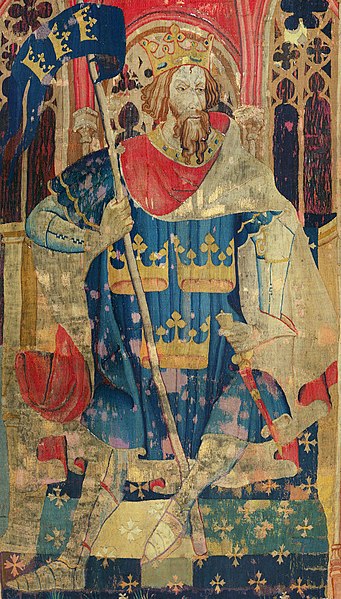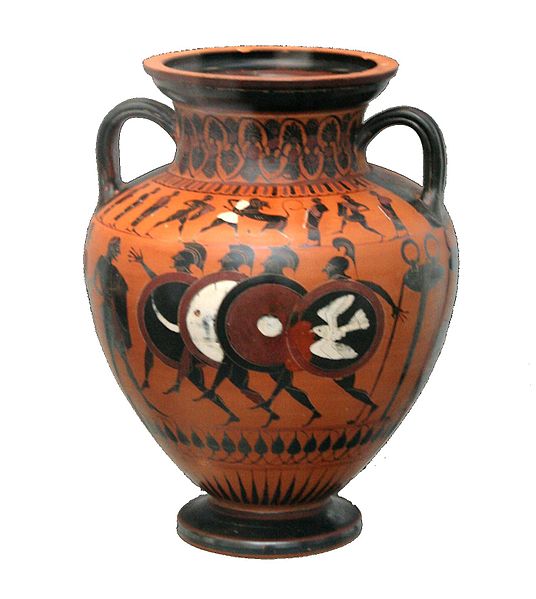Attributed arms are Western European coats of arms given retrospectively to persons real or fictitious who died before the start of the age of heraldry in the latter half of the 12th century. Once coats of arms were the established fashion of the ruling class, society expected a king to be armigerous. Arms were assigned to the knights of the Round Table, and then to biblical figures, to Roman and Greek heroes, and to kings and popes who had not historically borne arms. Individual authors often attributed different arms for the same person, although the arms for major figures eventually became fixed.
Example of arms attributed to Jesus from the 15th-century Hyghalmen Roll, based on the instruments of the Passion
Arthur as one of the Nine Worthies, tapestry, c. 1385
Lancelot (arms with three red bends) and Tristan from a 15th-century manuscript
Tristan and Iseult kissing, with attributed arms on a field of green in center
Heraldry is a discipline relating to the design, display and study of armorial bearings, as well as related disciplines, such as vexillology, together with the study of ceremony, rank and pedigree. Armory, the best-known branch of heraldry, concerns the design and transmission of the heraldic achievement. The achievement, or armorial bearings usually includes a coat of arms on a shield, helmet and crest, together with any accompanying devices, such as supporters, badges, heraldic banners and mottoes.
The German Hyghalmen Roll was made in the late 15th century and illustrates the German practice of repeating themes from the arms in the crest. (See Roll of arms).
Reverse of the Narmer Palette, circa 3100 BC. The top row depicts four men carrying standards. Directly above them is a serekh containing the name of the king, Narmer.
Fresco depicting a shield of a type common in Mycenaean Greece.
Vase with Greek soldiers in armor, circa 550 BC.








